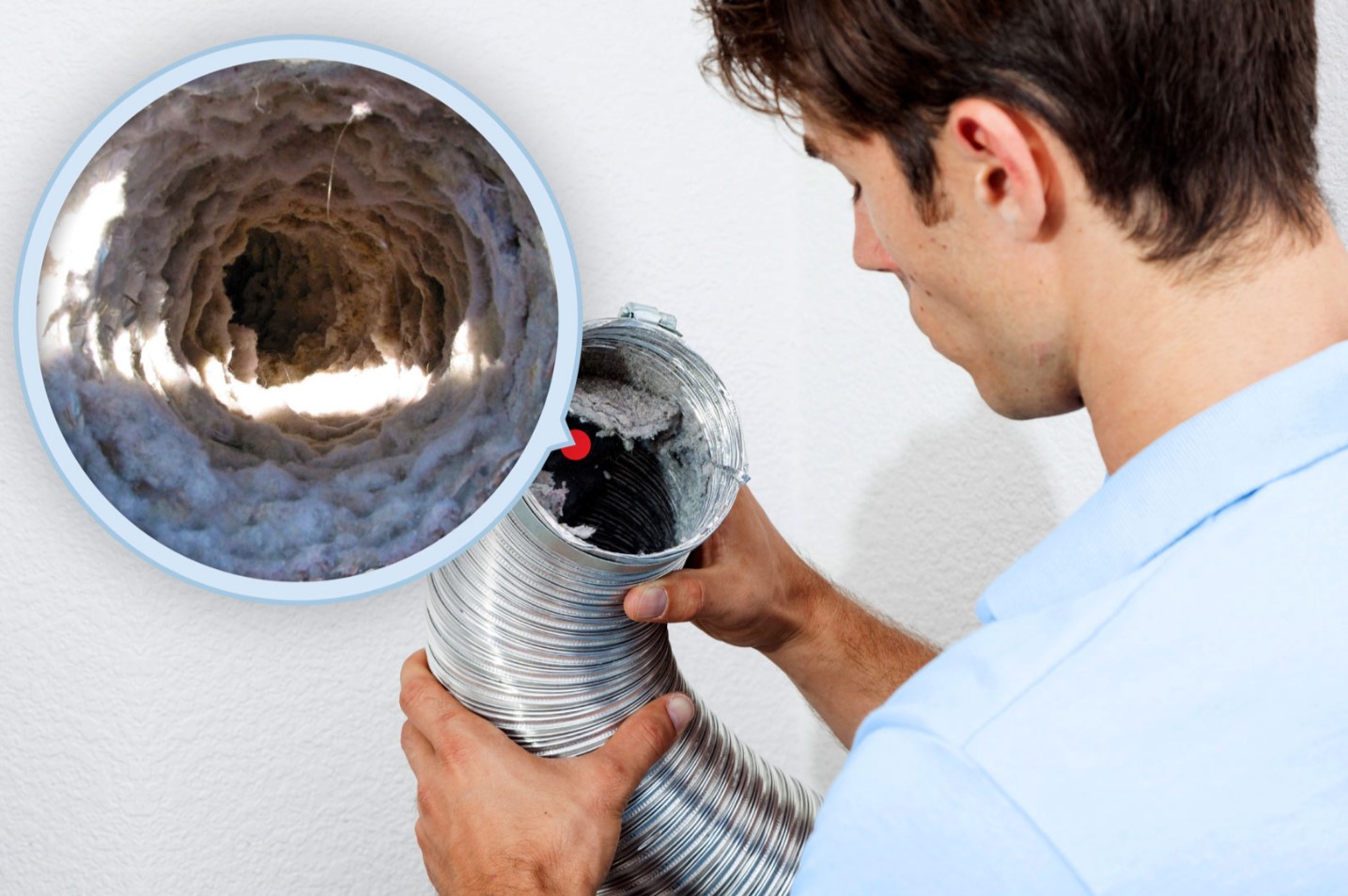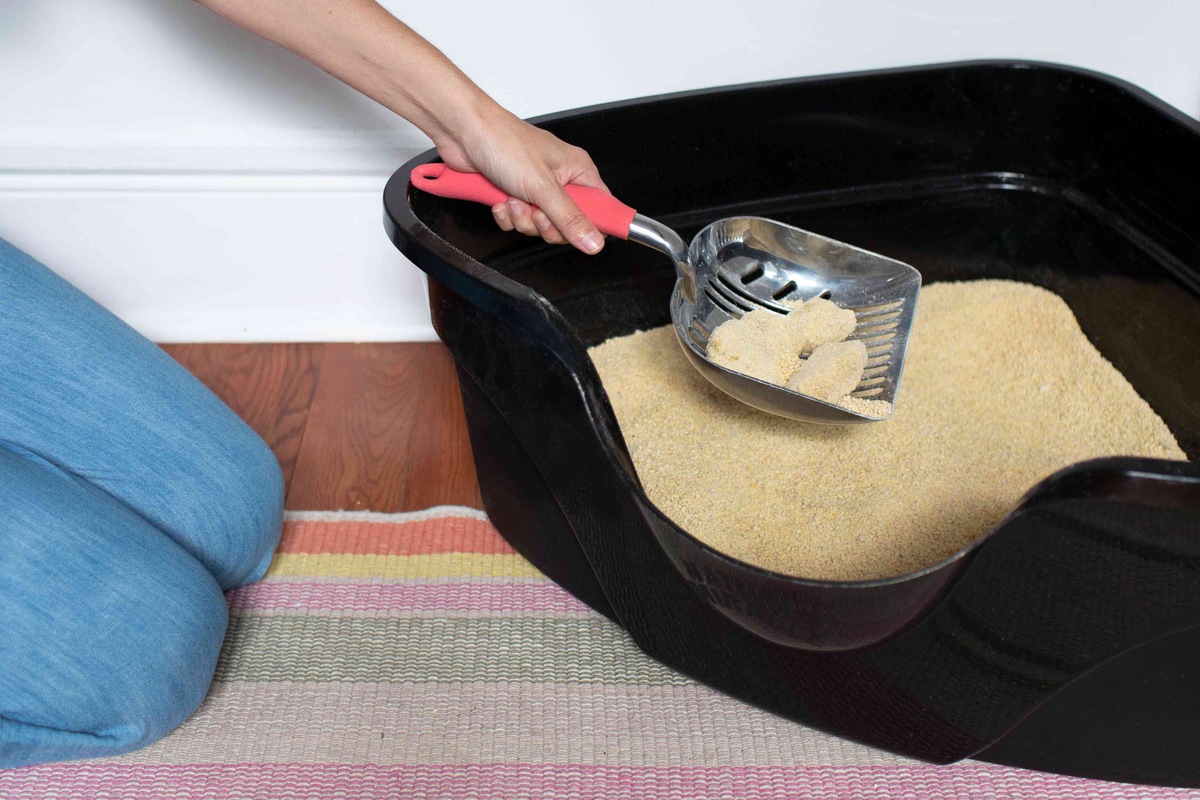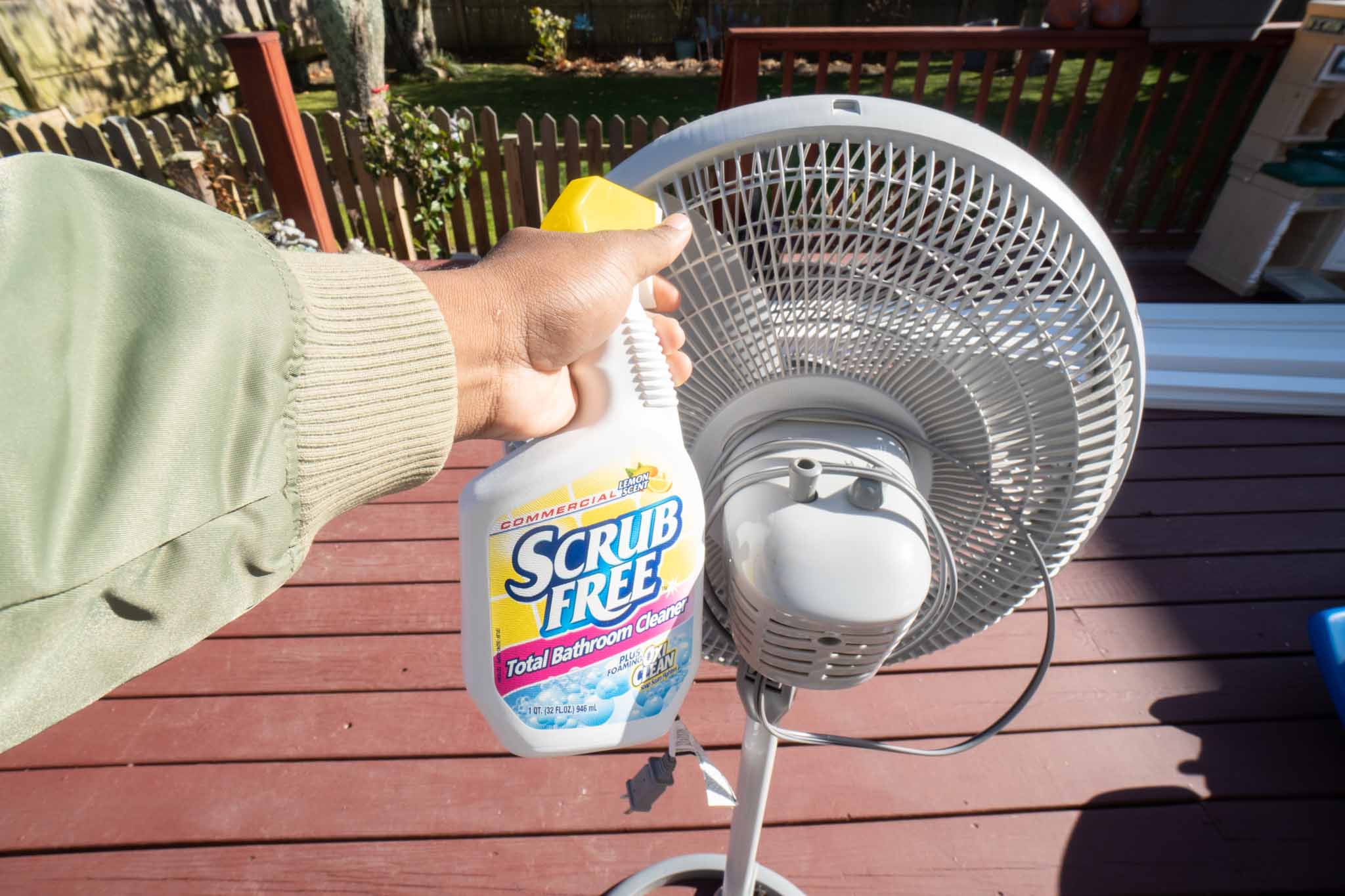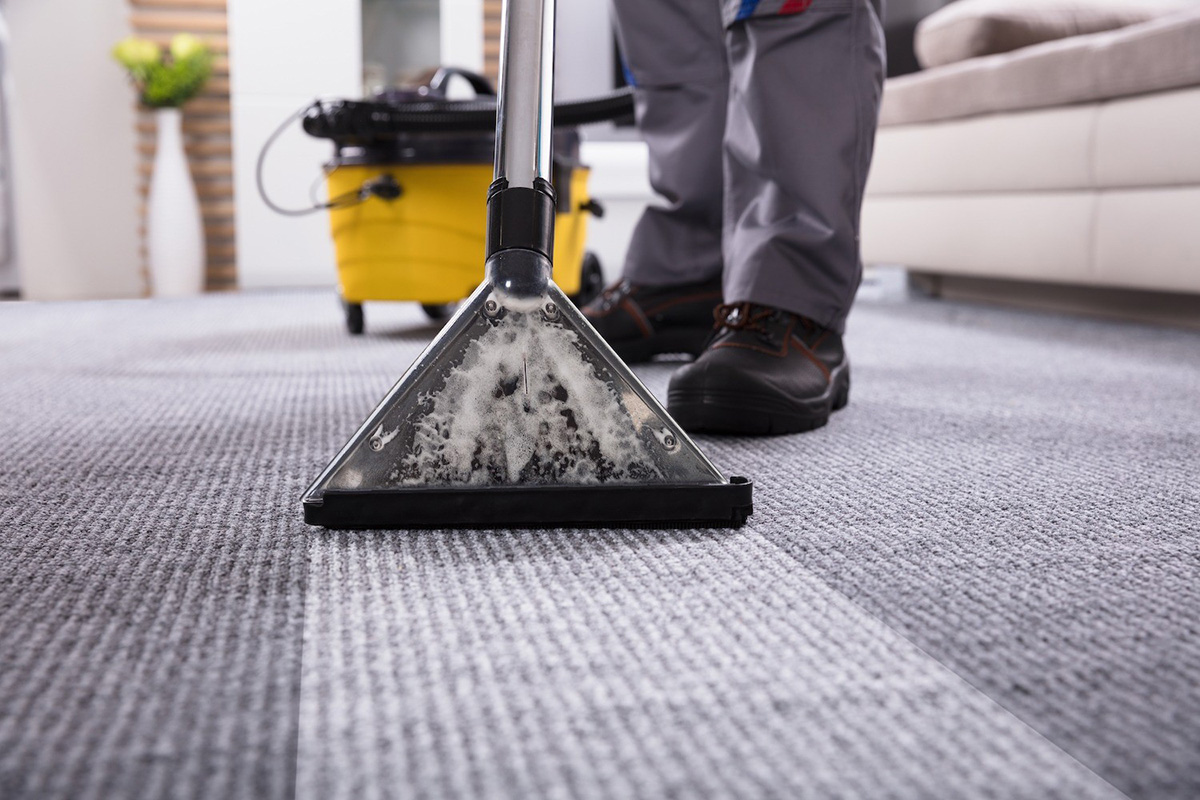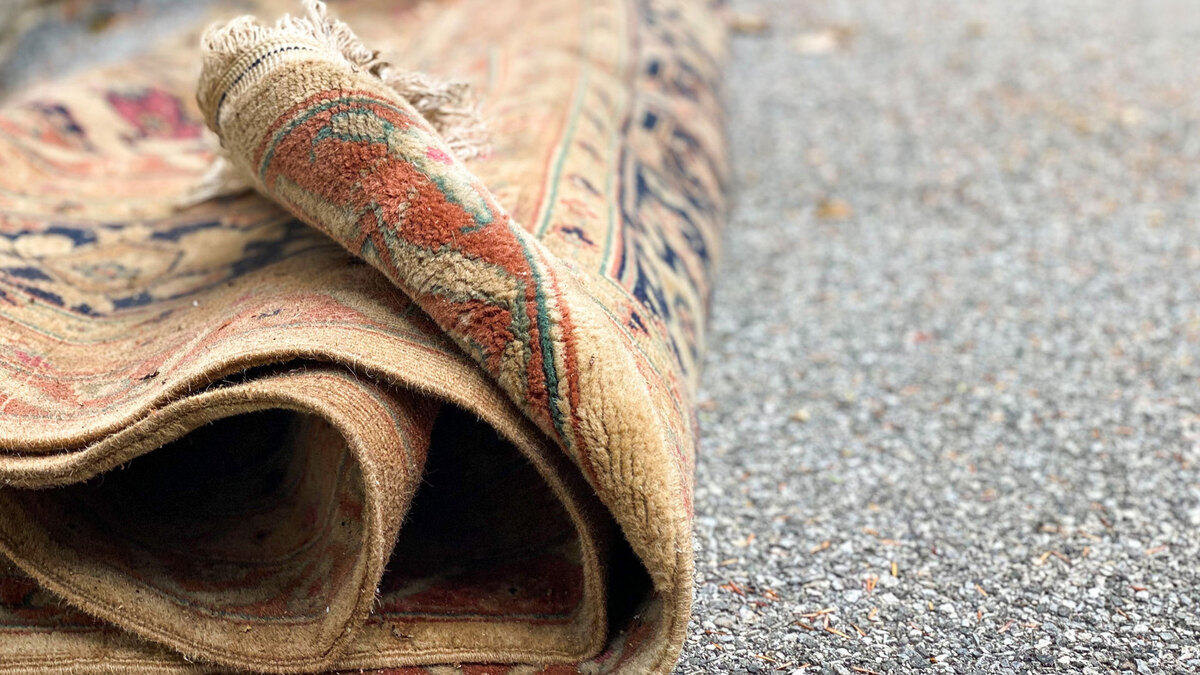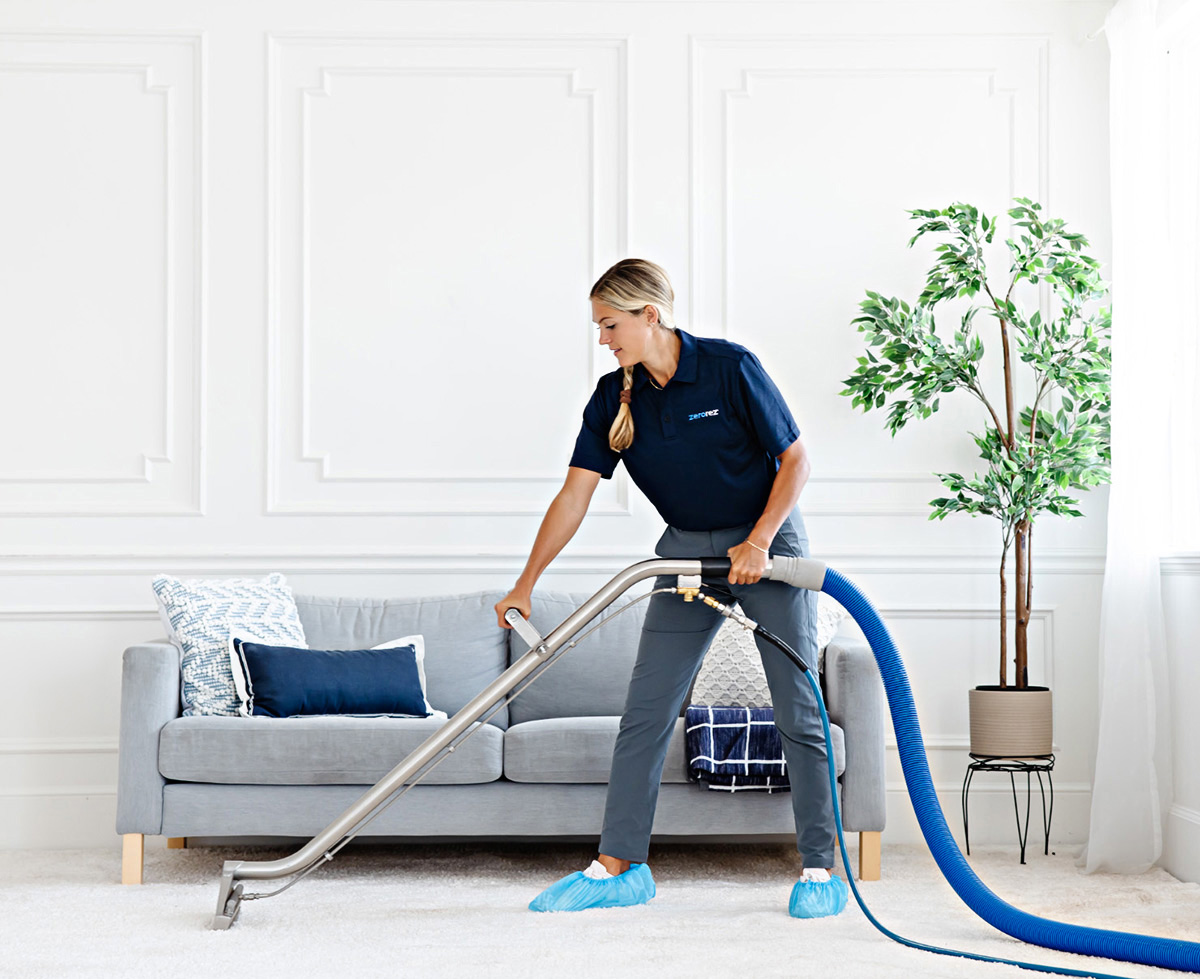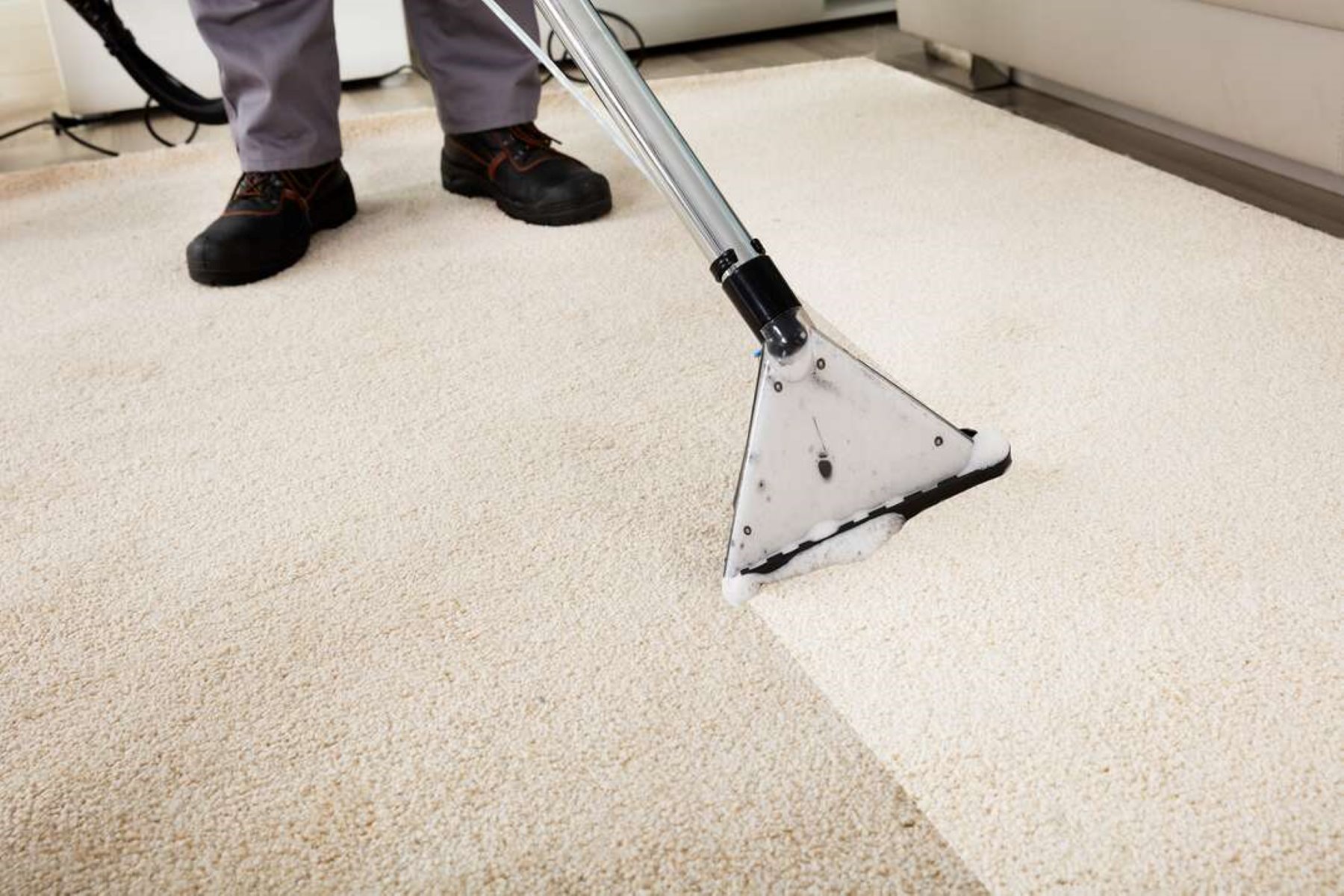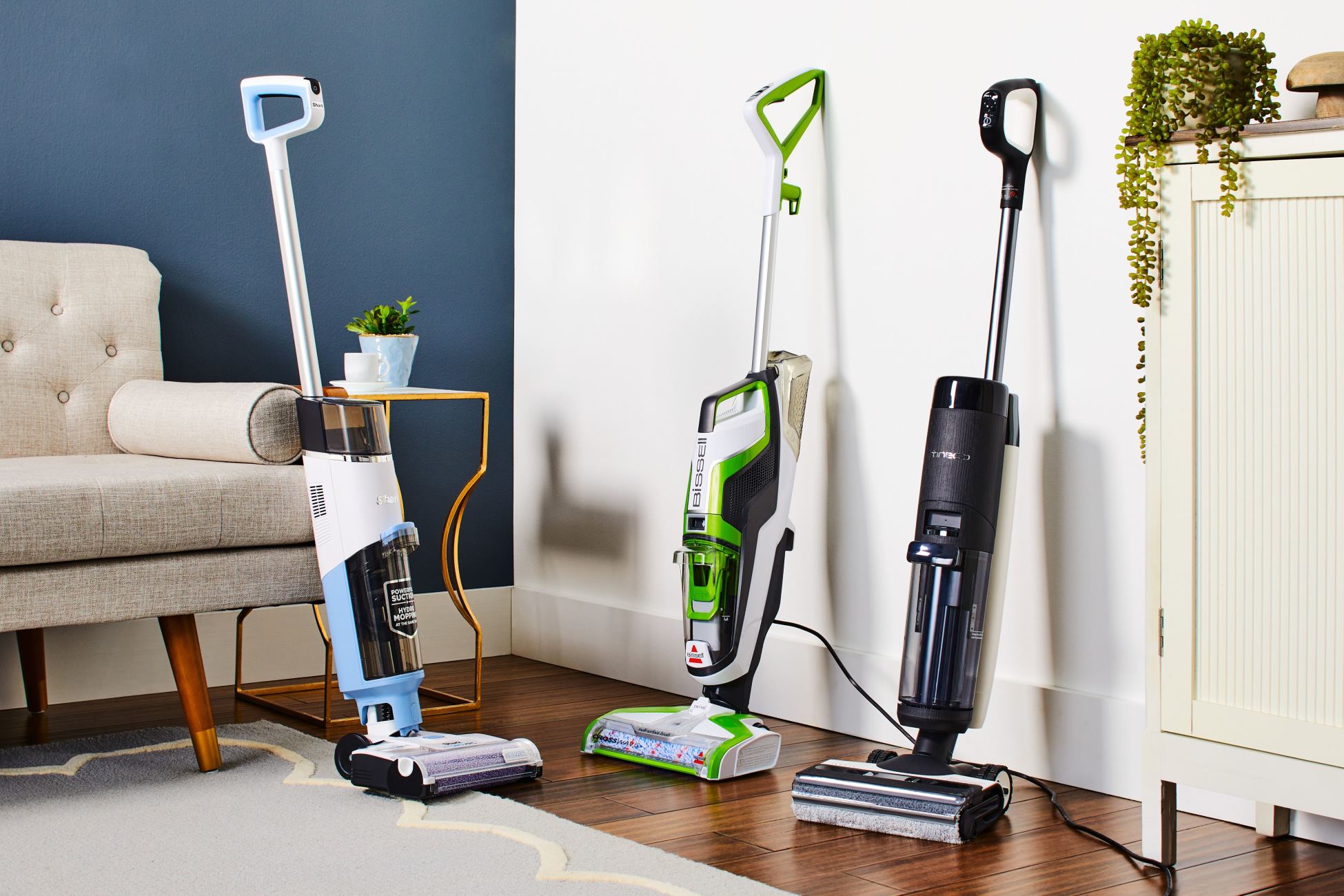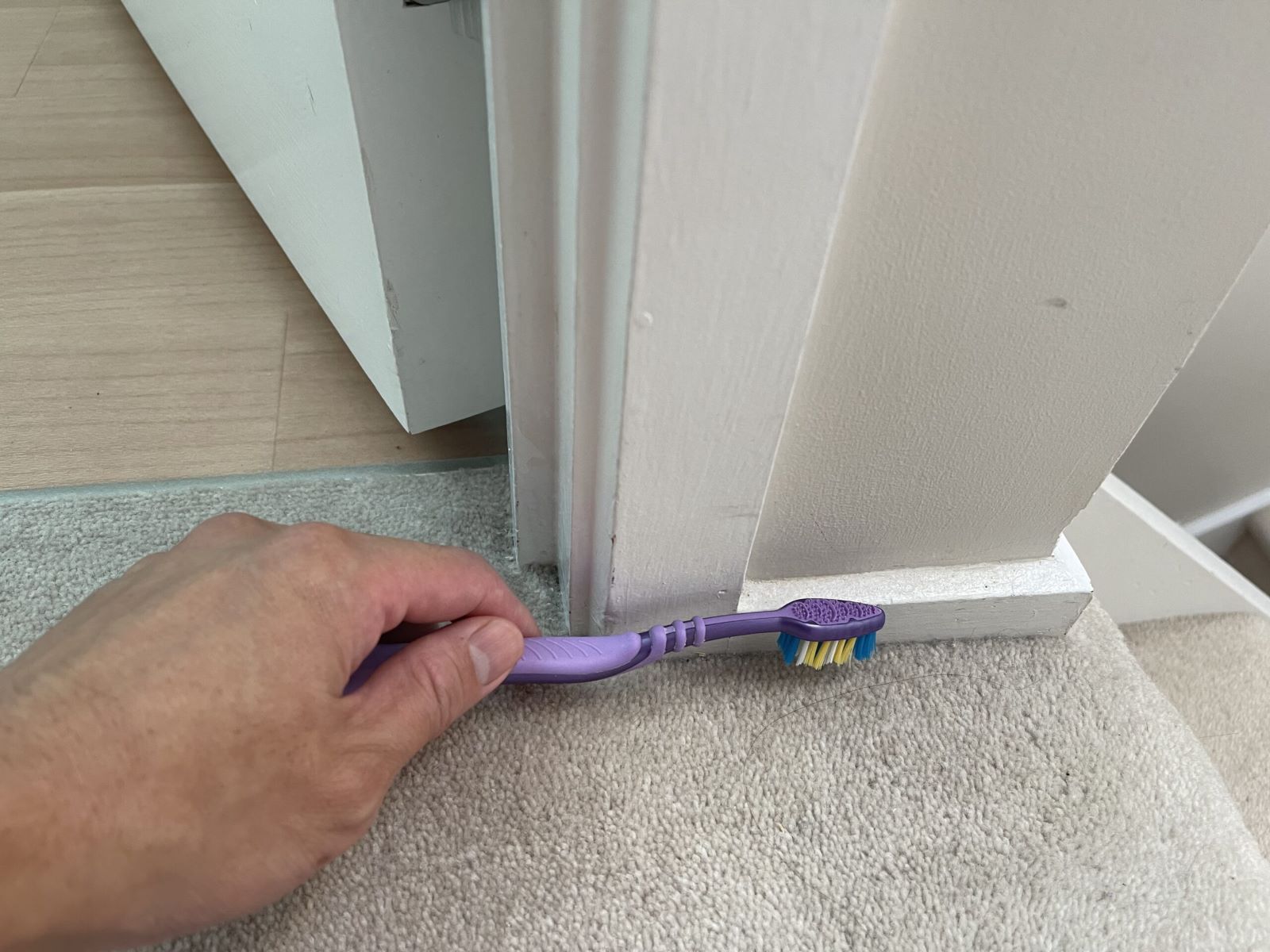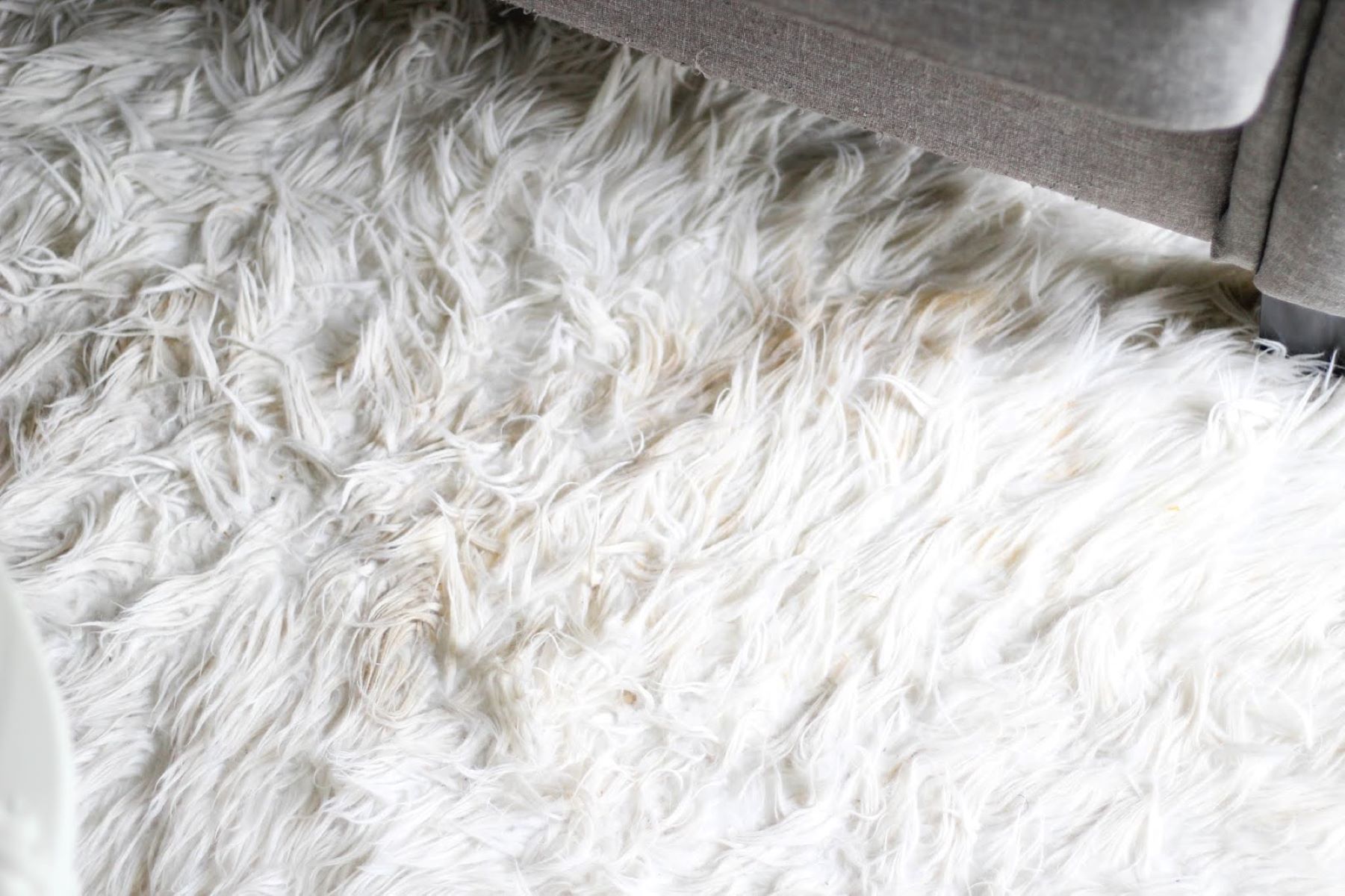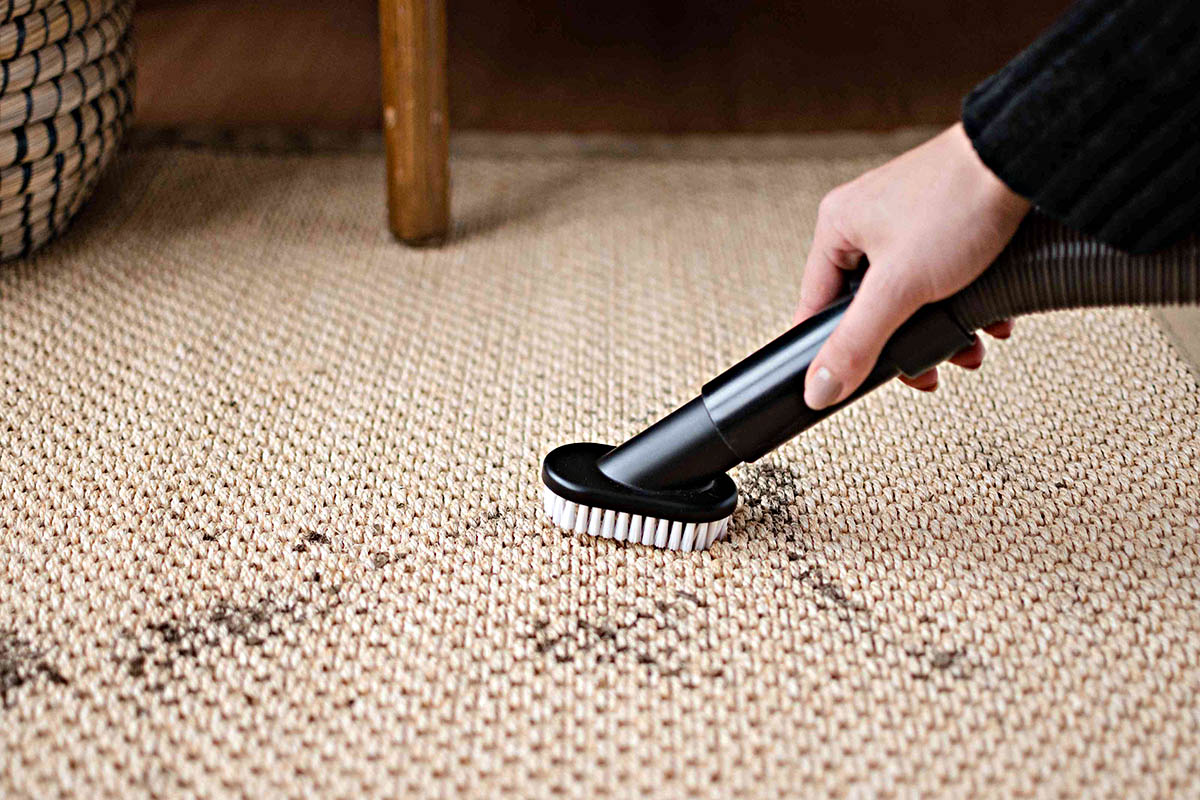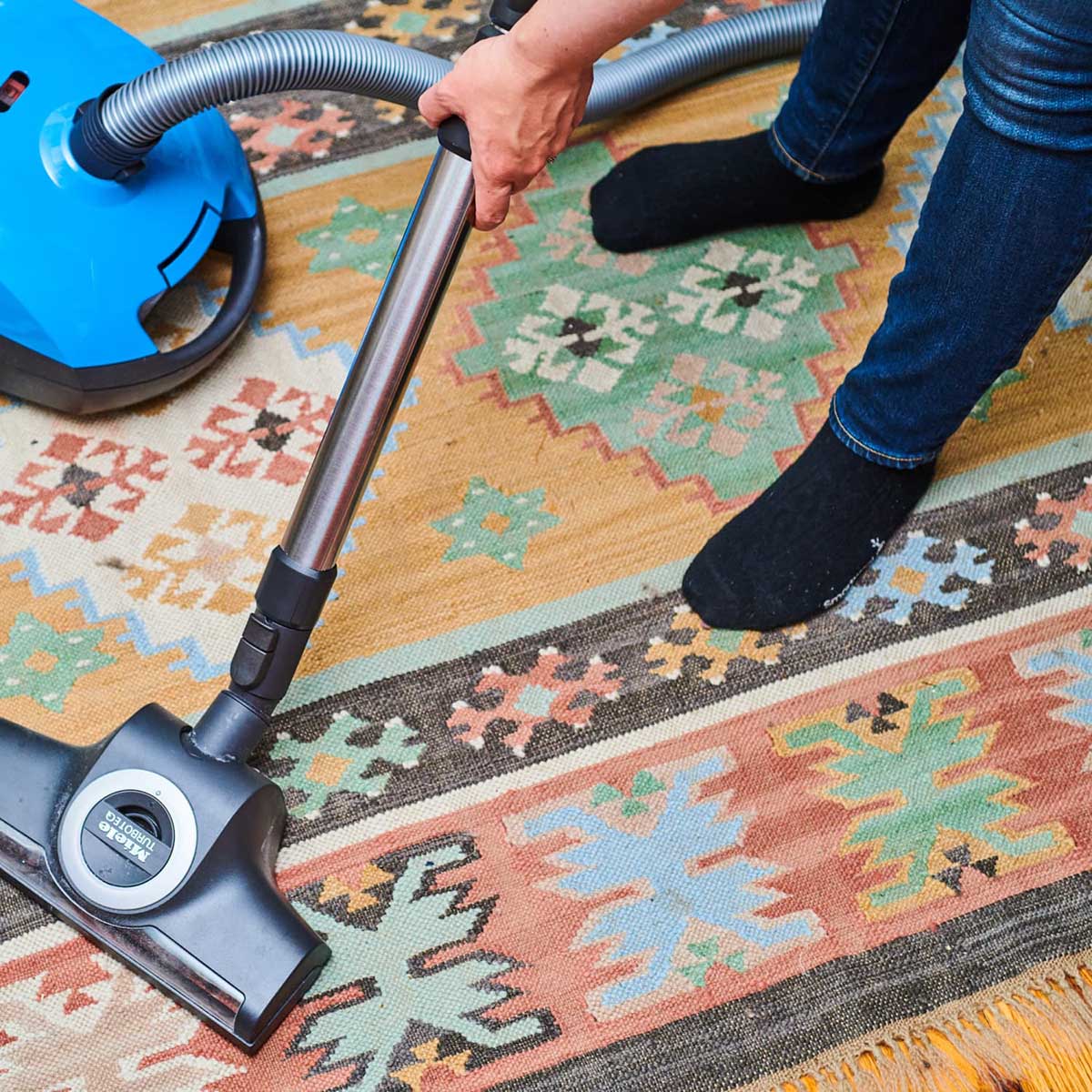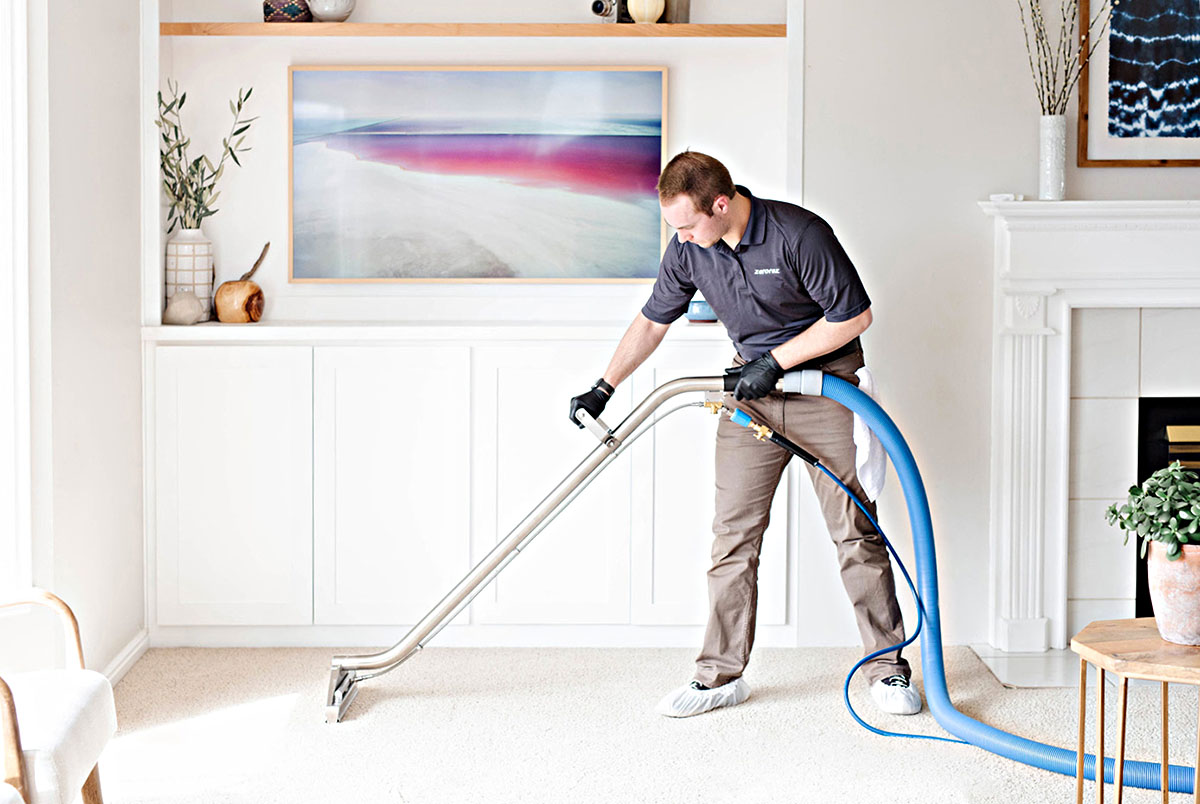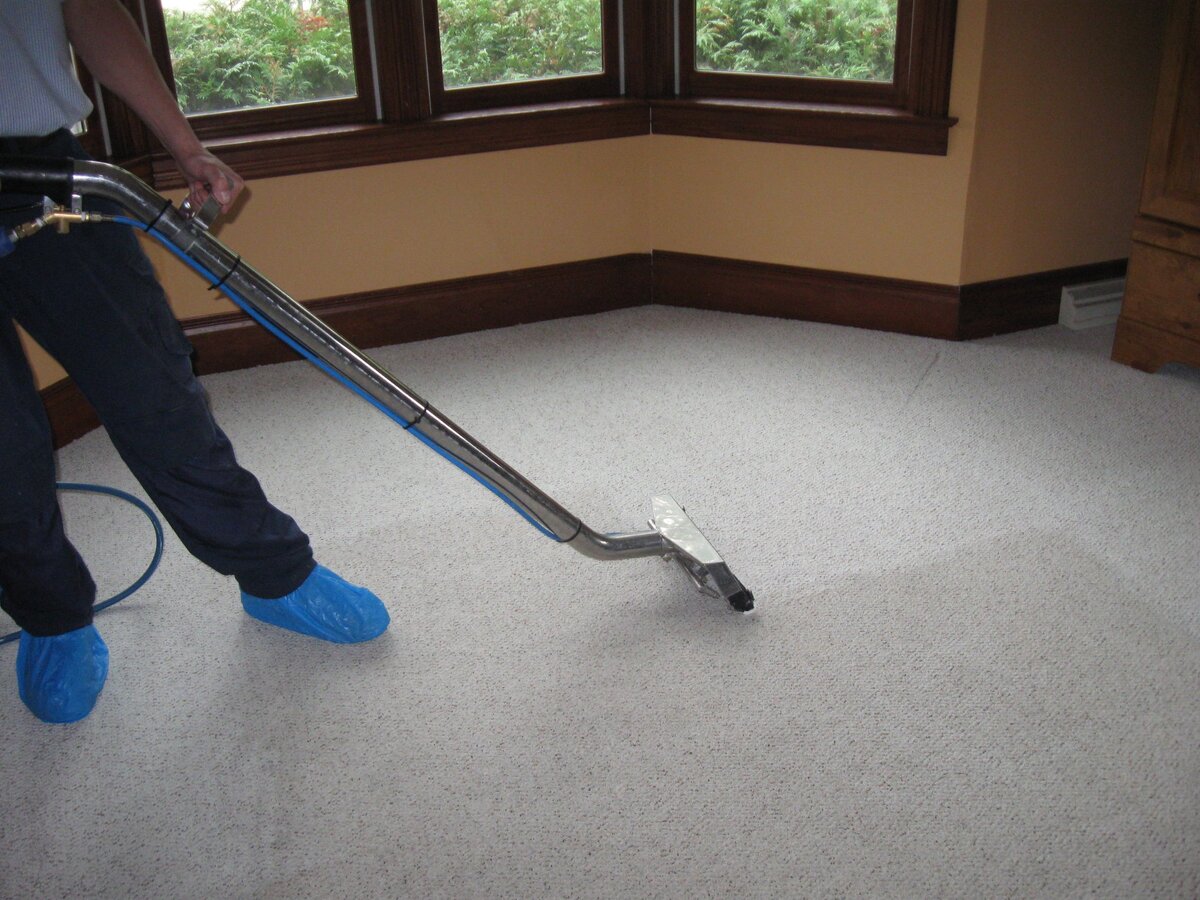

Articles
How To Clean A Carpet In An Apartment
Modified: January 9, 2024
Learn effective techniques and tips for cleaning carpets in your apartment with our informative articles. Keep your space fresh and tidy with expert advice.
(Many of the links in this article redirect to a specific reviewed product. Your purchase of these products through affiliate links helps to generate commission for Storables.com, at no extra cost. Learn more)
Introduction
A clean and well-maintained carpet can greatly enhance the appearance and comfort of any apartment. However, carpets are prone to accumulating dirt, stains, and odors over time, which can be quite challenging to remove. Thankfully, with the right supplies and techniques, you can effectively clean your carpet and restore it to its former glory.
In this article, we will guide you through the step-by-step process of cleaning a carpet in an apartment. We will cover everything from preparing the area to deep cleaning the carpet and finishing touches. So, grab your cleaning supplies and let’s get started!
Key Takeaways:
- Properly preparing the area, treating stains promptly, and choosing the right cleaning method are crucial for effectively cleaning a carpet in an apartment. Regular maintenance and preventive measures will help maintain its cleanliness and longevity.
- Thoroughly drying the carpet after cleaning is essential to prevent potential damage and the growth of mold and mildew. Final touches such as grooming the carpet fibers and applying a deodorizer will add the perfect finishing touch to the cleaning process.
Read more: How To Cover A Carpet In An Apartment
Supplies Needed
Before you begin the carpet cleaning process, it is essential to gather all the necessary supplies. Having the right tools and products on hand will make the cleaning process more efficient and effective. Here are the supplies you will need:
- A vacuum cleaner: This will be used to remove loose dirt and debris from the carpet.
- A carpet stain remover: Choose a high-quality stain remover that is suitable for your type of carpet. Look for one that can tackle a variety of stains, including food spills, pet stains, and grease marks.
- A bucket of warm water: This will be used for diluting the stain remover and for rinsing the carpet.
- A scrub brush or sponge: Use a soft bristle brush or a sponge to gently scrub away stains and dirt.
- A clean white cloth or paper towels: These will be used for blotting and absorbing moisture from the carpet.
- A carpet cleaning machine (optional): If you have access to a carpet cleaning machine, it can greatly facilitate the deep cleaning process. However, it is not necessary for basic carpet cleaning.
Make sure to gather all these supplies before you start cleaning the carpet. Having everything ready will save you time and ensure a smooth cleaning process.
Preparing the Area
Before you dive into cleaning the carpet, it is important to prepare the area to ensure a more efficient and thorough cleaning process. Here are some steps to follow:
- Remove furniture and objects: Start by removing any furniture or objects that are on the carpeted area. This will give you unrestricted access to the entire carpet.
- Vacuum the carpet: Use a vacuum cleaner with a brush attachment to thoroughly vacuum the entire carpet. This will help remove loose dirt, dust, and debris from the surface. Pay extra attention to high-traffic areas and areas with visible stains.
- Inspect for stains and treat them: Take a close look at the carpet and identify any visible stains. Use a carpet stain remover according to the directions on the product to treat the stains prior to deep cleaning.
- Protect nearby surfaces: If there are any surfaces or objects near the carpet that you want to protect from water or cleaning solutions, use plastic tarps or towels to cover them.
- Test for colorfastness: Before applying any cleaning solution to the carpet, it is important to test it in an inconspicuous area to ensure it does not cause discoloration or damage to the carpet fibers. Choose a small, discreet area and apply a small amount of the cleaning solution. Blot it with a clean white cloth and check for any color transfer or damage.
By properly preparing the area, you will be ready to tackle any stubborn stains and ensure a more successful carpet cleaning process. With the area cleared and inspected, you can now move on to the next step of removing loose dirt from the carpet.
Removing Loose Dirt
After preparing the area, it’s time to focus on removing loose dirt and debris from the carpet. This step is essential as it helps to prevent the dirt from further embedding into the carpet fibers during the cleaning process. Here’s how to effectively remove loose dirt from your carpet:
- Ensure your vacuum cleaner is ready: Double-check that your vacuum cleaner is in good working condition and that the bag or canister is empty. A full bag or canister can impede the effectiveness of the vacuum.
- Choose the appropriate attachment: Select the appropriate attachment for your vacuum cleaner. A brush attachment or a beater bar attachment is usually the most effective for carpet cleaning.
- Vacuum in different directions: Start vacuuming the carpet in one corner of the room and work your way across in overlapping sections. It’s important to vacuum in different directions (north to south, east to west) to ensure you capture dirt from all angles.
- Pay attention to high-traffic areas: Give extra attention to areas of the carpet that receive the most foot traffic, such as entryways, hallways, and in front of frequently used furniture. These areas tend to accumulate more dirt and may require additional passes with the vacuum.
- Use a crevice tool for hard-to-reach areas: Use a crevice tool attachment or an upholstery attachment to clean along the edges of the room, along baseboards, and around furniture legs.
By thoroughly vacuuming the carpet and paying attention to high-traffic areas, you will remove a significant amount of loose dirt and debris that could otherwise interfere with the deep cleaning process. Once you have removed the loose dirt, you can move on to treating any stubborn stains on the carpet.
Treating Stains
Stains on carpets can be unsightly and can be a challenge to remove. However, with the right techniques and products, you can effectively treat and eliminate various types of stains. Here’s how to tackle common carpet stains:
- Identify the stain: Determine the type of stain you’re dealing with so you can choose the appropriate cleaning method. Common carpet stains include food stains, pet stains, ink or dye stains, grease or oil stains, and beverage spills.
- Blot excess liquid: If the stain is fresh and still wet, start by blotting it with a clean white cloth or paper towel. Do not rub the stain as it can spread and damage the carpet fibers.
- Choose a suitable stain remover: Depending on the type of stain, select a suitable carpet stain remover. Read the manufacturer’s instructions carefully before applying it to the stained area.
- Apply the stain remover: Following the instructions on the product, apply the stain remover to the affected area. Use a clean cloth or sponge to gently work the solution into the stain. For larger stains, you may need to use a scrub brush.
- Let the stain remover sit: Allow the stain remover to sit on the stain for the recommended amount of time. This will help break down the stain and make it easier to remove.
- Blot or rinse the stain: After the recommended time has passed, blot the stain with a clean cloth or rinse it with warm water. Blotting helps to absorb the staining material, while rinsing helps to remove any residues.
- Repeat if necessary: Depending on the severity of the stain, you may need to repeat the process several times to completely eliminate it. Be patient and persistent.
- Let the carpet dry: After treating the stain, allow the carpet to air dry completely before moving on to the next step of deep cleaning.
Remember to always follow the instructions provided by the manufacturer of the stain remover. If you are unsure about the suitability of a stain remover for your specific carpet type, it’s advisable to test it on a small, inconspicuous area first.
Now that you’ve addressed the stains on your carpet, it’s time to move on to the deep cleaning process.
Use a mixture of equal parts white vinegar and water to spot clean stains on your carpet. Blot the stain with the solution and a clean cloth, then rinse with water and blot dry.
Read more: How To Clean Apartment Balcony
Deep Cleaning the Carpet
Deep cleaning your carpet is an essential step to remove embedded dirt, grime, and odors. While there are professional carpet cleaning services available, you can also achieve an effective deep clean yourself. Here’s how:
- Choose a carpet cleaning method: There are several methods to deep clean a carpet, including steam cleaning, dry cleaning, and shampooing. Select the method that is most suitable for your carpet type and availability of equipment.
- Read the equipment instructions: If you are using a carpet cleaning machine, such as a carpet extractor or steam cleaner, carefully read the instructions provided by the manufacturer. This will ensure you understand how to operate the equipment properly.
- Prepare the cleaning solution: Depending on the method you’ve chosen, prepare the cleaning solution accordingly. For steam cleaning, fill the machine’s tank with hot water and the recommended amount of carpet cleaning solution. For dry cleaning or shampooing, follow the instructions provided with the specific product you are using.
- Start cleaning from one corner: Begin cleaning the carpet from one corner of the room and work your way across in small sections. Make slow, overlapping passes with the cleaning equipment to ensure thorough cleaning.
- Pay attention to heavily soiled areas: For areas with heavy dirt or stains, spend extra time cleaning and make multiple passes. You may need to use the machine’s scrub brush or manually scrub with a scrub brush or sponge.
- Change the cleaning solution and rinse (if necessary): If your carpet cleaning machine has a separate tank for clean water, periodically change the cleaning solution as it becomes dirty. If the machine does not have a rinse feature, follow up by rinsing the carpet with clean water and blotting up the excess moisture.
- Avoid over-saturating the carpet: It’s important not to over-saturate the carpet during the deep cleaning process, as this can lead to longer drying times and potential damage to the carpet. Follow the manufacturer’s guidelines for proper water and solution ratios.
- Let the carpet dry: After deep cleaning, allow the carpet to dry completely. Open windows and use fans or dehumidifiers to facilitate the drying process. Avoid walking on the carpet until it’s fully dry.
Deep cleaning your carpet can breathe new life into it, removing deep-seated dirt and revitalizing its appearance. Once the carpet is dry, we can move on to the final steps of the cleaning process.
Drying the Carpet
Properly drying the carpet after cleaning is crucial to prevent any potential damage and to avoid the growth of mold and mildew. Here are some steps to ensure the carpet dries thoroughly:
- Remove excess moisture: If your carpet is damp after the deep cleaning process, use clean, absorbent towels or a wet-dry vacuum to remove any excess moisture. Gently press down on the carpet to soak up the water.
- Provide good ventilation: Open windows and doors to promote airflow and ventilation in the room. This will help the moisture evaporate faster and aid in drying the carpet.
- Use fans or dehumidifiers: Place fans strategically around the room to circulate the air and speed up the drying process. Alternatively, you can also use dehumidifiers to remove excess moisture from the air.
- Avoid walking on the carpet: While the carpet is drying, it’s important to avoid walking on it as much as possible. This will prevent any dirt or debris from being transferred onto the damp carpet and will help maintain its newly cleaned appearance.
- Check for dampness: After a few hours, check the carpet for any dampness. If it still feels moist, continue with the ventilation and drying process until it is fully dry to the touch.
The drying time can vary depending on factors such as the carpet’s thickness, the humidity level of the room, and the airflow. Be patient and allow enough time for the carpet to dry completely before resuming regular foot traffic.
Once the carpet is dry, you can proceed with the final touches to complete the cleaning process.
Final Touches
After deep cleaning and drying your carpet, there are a few final touches you can do to ensure it looks its absolute best. These simple steps will add the finishing touches to your carpet cleaning process:
- Vacuum again: Once the carpet is completely dry, give it a final vacuuming to fluff up the carpet fibers and remove any remaining dirt or debris that may have settled during the drying process.
- Groom the carpet: Use a carpet rake or a brush to gently groom the carpet. This will help lift the fibers and give your carpet a fresh and uniform appearance.
- Apply carpet deodorizer (optional): If desired, you can apply a carpet deodorizer or freshener to give your carpet a pleasant scent. Follow the instructions on the product and ensure proper ventilation while using it.
- Replace furniture and objects: Once the final touches are done, it’s time to move the furniture and objects back onto the carpeted area. Use furniture pads or sliders to protect the carpet from any potential damage caused by heavy furniture.
With these final touches, your carpet will not only be clean but will also look refreshed and inviting. Regular maintenance, such as vacuuming and promptly addressing spills or stains, will help prolong the cleanliness and lifespan of your carpet.
Congratulations! You have successfully cleaned and rejuvenated your carpet. By following these steps and being proactive with regular cleaning and maintenance, your apartment’s carpet will continue to enhance the overall ambiance of your living space.
Remember to always refer to the manufacturer’s instructions for specific cleaning recommendations based on your carpet type and any warranty requirements.
So sit back, relax, and enjoy your clean and fresh carpet!
Conclusion
Cleaning a carpet in an apartment can be a daunting task, but with the right supplies, techniques, and a little bit of elbow grease, you can achieve a beautifully clean and fresh carpet. By following the step-by-step process outlined in this article, you can effectively remove dirt, stains, and odors from your carpet, restoring its appearance and prolonging its lifespan.
Remember to thoroughly prepare the area before cleaning, removing furniture and objects, and vacuuming to remove loose dirt. Treating stains promptly and with the appropriate stain remover will help prevent them from setting in and becoming more difficult to remove. Deep cleaning the carpet, whether through steam cleaning, dry cleaning, or shampooing, will remove embedded dirt and refresh the carpet fibers.
Proper drying of the carpet is crucial to prevent any potential damage and the growth of mold and mildew. Be sure to provide good ventilation, use fans or dehumidifiers, and avoid walking on a damp carpet. Once the carpet is dry, finish off with some final touches such as a final vacuuming, grooming of the carpet fibers, and possibly applying a carpet deodorizer for a pleasant scent.
Regular maintenance and preventive measures such as regular vacuuming, addressing spills promptly, and periodic deep cleaning will help maintain the cleanliness and longevity of your carpet. Remember to refer to the manufacturer’s instructions for specific cleaning recommendations based on your carpet type and any warranty requirements.
With a clean and fresh carpet in your apartment, you can enjoy a more inviting and comfortable living space. So roll up your sleeves, grab your cleaning supplies, and give your carpet the tender loving care it deserves. Your efforts will be rewarded with a carpet that looks and feels as good as new.
Frequently Asked Questions about How To Clean A Carpet In An Apartment
Was this page helpful?
At Storables.com, we guarantee accurate and reliable information. Our content, validated by Expert Board Contributors, is crafted following stringent Editorial Policies. We're committed to providing you with well-researched, expert-backed insights for all your informational needs.
